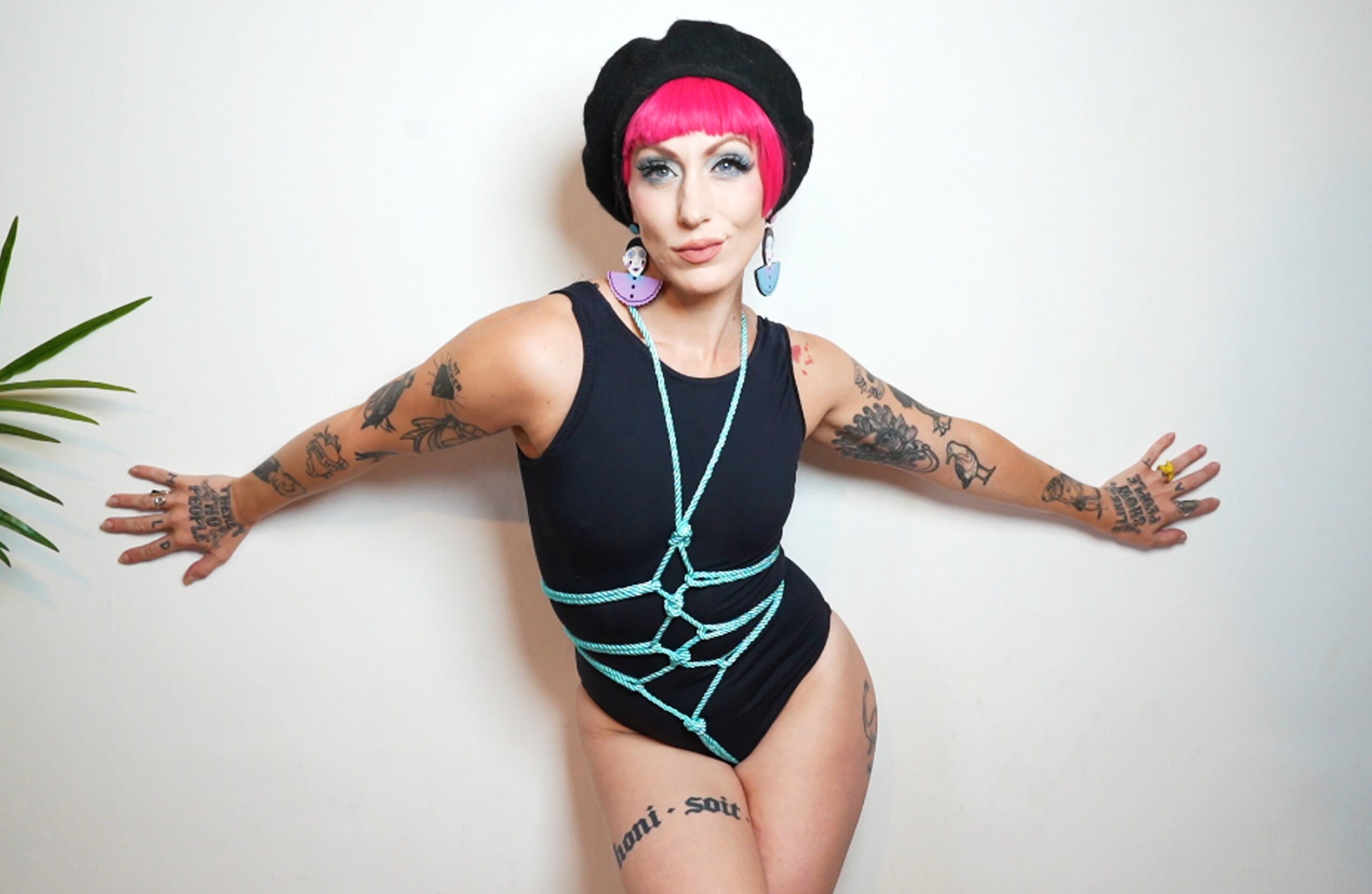Challenging Binary Categories
For centuries, language and societal norms have reinforced the idea that human sexuality exists on a rigid binary spectrum: male or female, attracted to either opposite-sex or same-sex individuals. This binary categorization, while seemingly straightforward, fails to encompass the diverse range of experiences and expressions within the spectrum of human love and attraction.
Rejecting Heterosexual/Homosexual Dichotomy
Pansexuality challenges this limiting binary by asserting that attraction transcends gender identity. It proposes that individuals can be attracted to people regardless of their gender presentation or identification, encompassing a spectrum far beyond the confines of heterosexual and homosexual labels. This fluidity rejects the notion that love and attraction are confined to predetermined categories, recognizing instead the complexity and diversity of human experience.
By embracing pansexuality, individuals break free from societal expectations and redefine what it means to be attracted to another person. It shifts the focus from gender as a defining characteristic of attraction towards a more inclusive understanding of love based on personality, connection, and shared values.
Expanding the Spectrum of Attraction
For centuries, language and societal norms have reinforced the idea that human sexuality exists on a rigid binary spectrum: male or female, attracted to either opposite-sex or same-sex individuals. This binary categorization, while seemingly straightforward, fails to encompass the diverse range of experiences and expressions within the spectrum of human love and attraction.
Pansexuality challenges this limiting binary by asserting that attraction transcends gender identity. It proposes that individuals can be attracted to people regardless of their gender presentation or identification, encompassing a spectrum far beyond the confines of heterosexual and homosexual labels. This fluidity rejects the notion that love and attraction are confined to predetermined categories, recognizing instead the complexity and diversity of human experience.

By embracing pansexuality, individuals break free from societal expectations and redefine what it means to be attracted to another person. It shifts the focus from gender as a defining characteristic of attraction towards a more inclusive understanding of love based on personality, connection, and shared values.
- Pansexuality challenges the traditional binary by recognizing that attraction is not limited by gender identity.
- It emphasizes that individuals can be attracted to people regardless of their gender presentation or identification.
- By rejecting rigid categories, pansexuality promotes a more inclusive and accepting understanding of love and relationships.
Fluid and Multifaceted Experiences
For centuries, the dominant narrative surrounding sexuality has been confined to a rigid binary: male/female, attracted to either opposite or same sex. This limited framework fails to capture the rich tapestry of human experience, neglecting the diverse ways individuals experience and express love and attraction.
Beyond Labels and Definitions
Pansexuality challenges this restrictive binary by asserting that attraction is fluid and multifaceted, extending beyond traditional gender categories. It posits that individuals can be attracted to people regardless of their gender identity or expression, encompassing a spectrum far wider than the confines of heterosexual or homosexual labels.
This paradigm shift recognizes the complexity of human desire and rejects the notion that love and attraction are predetermined by societal norms or rigid definitions. It emphasizes the importance of individual experience and encourages a more inclusive understanding of relationships.
Embracing pansexuality allows individuals to explore their feelings authentically and connect with others based on shared values, personality, and emotional connection rather than solely focusing on gender as a defining characteristic of attraction.
Embracing Individuality in Expression
For centuries, the dominant narrative surrounding sexuality has been confined to a rigid binary: male/female, attracted to either opposite or same sex. This limited framework fails to capture the rich tapestry of human experience, neglecting the diverse ways individuals experience and express love and attraction.
Pansexuality challenges this restrictive binary by asserting that attraction is fluid and multifaceted, extending beyond traditional gender categories. It posits that individuals can be attracted to people regardless of their gender identity or expression, encompassing a spectrum far wider than the confines of heterosexual or homosexual labels.
This paradigm shift recognizes the complexity of human desire and rejects the notion that love and attraction are predetermined by societal norms or rigid definitions. It emphasizes the importance of individual experience and encourages a more inclusive understanding of relationships.
Embracing pansexuality allows individuals to explore their feelings authentically and connect with others based on shared values, personality, and emotional connection rather than solely focusing on gender as a defining characteristic of attraction.
Social and Cultural Implications
For centuries, the dominant narrative surrounding sexuality has been confined to a rigid binary: male/female, attracted to either opposite or same sex. This limited framework fails to capture the rich tapestry of human experience, neglecting the diverse ways individuals experience and express love and attraction.
Pansexuality challenges this restrictive binary by asserting that attraction is fluid and multifaceted, extending beyond traditional gender categories. It posits that individuals can be attracted to people regardless of their gender identity or expression, encompassing a spectrum far wider than the confines of heterosexual or homosexual labels.
This paradigm shift recognizes the complexity of human desire and rejects the notion that love and attraction are predetermined by societal norms or rigid definitions. It emphasizes the importance of individual experience and encourages a more inclusive understanding of relationships.
Embracing pansexuality allows individuals to explore their feelings authentically and connect with others based on shared values, personality, and emotional connection rather than solely focusing on gender as a defining characteristic of attraction.

Redefining Relationships and Family Structures
The fluidity inherent in pansexual identity challenges traditional notions of family structures and relationships. It encourages the formation of families and partnerships based on love, compatibility, and shared values rather than societal expectations tied to gender roles or binary classifications.
Pansexuality dismantles the limitations imposed by rigid definitions of “family.” It allows individuals to create chosen families that encompass a diverse range of individuals who share their lives and support networks. These chosen families may include people of various genders, sexual orientations, and backgrounds, reflecting a more inclusive and equitable understanding of kinship.
Furthermore, pansexuality broadens the concept of romantic relationships by transcending gender as a defining factor in attraction. It allows individuals to explore love and intimacy with people who resonate with them on a deeper level, regardless of their gender identity or expression.
Challenging Societal Norms and Expectations
By embracing pansexuality, individuals challenge societal norms that dictate how love and attraction should manifest. They dismantle the idea that romantic interest is confined to specific gender categories and redefine what constitutes a fulfilling relationship. This shift in perspective fosters a more inclusive and accepting environment where individuals can express their authentic selves and connect with others based on genuine connection rather than societal expectations.
The visibility of pansexual individuals within society helps break down stereotypes and misconceptions surrounding sexual orientation. As more people openly identify as pansexual, it promotes understanding and acceptance of diverse experiences. This visibility normalizes pansexuality, making it less foreign to those who may not be familiar with the term or concept.
Challenging societal norms often leads to resistance and pushback from those who are accustomed to traditional structures and beliefs. Pansexual individuals may face prejudice, discrimination, and a lack of understanding from individuals who adhere to rigid views on sexuality. Overcoming this resistance requires open dialogue, education, and a willingness to challenge preconceived notions about love and attraction.
The Evolution of Understanding Love and Attraction
For centuries, language and societal norms have reinforced the idea that human sexuality exists on a rigid binary spectrum: male or female, attracted to either opposite-sex or same-sex individuals. This binary categorization, while seemingly straightforward, fails to encompass the diverse range of experiences and expressions within the spectrum of human love and attraction.
Pansexuality challenges this limiting binary by asserting that attraction transcends gender identity. It proposes that individuals can be attracted to people regardless of their gender presentation or identification, encompassing a spectrum far beyond the confines of heterosexual and homosexual labels. This fluidity rejects the notion that love and attraction are confined to predetermined categories, recognizing instead the complexity and diversity of human experience.

By embracing pansexuality, individuals break free from societal expectations and redefine what it means to be attracted to another person. It shifts the focus from gender as a defining characteristic of attraction towards a more inclusive understanding of love based on personality, connection, and shared values.
Historical Context and Changing Perspectives
For centuries, language and societal norms have reinforced the idea that human sexuality exists on a rigid binary spectrum: male or female, attracted to either opposite-sex or same-sex individuals. This binary categorization, while seemingly straightforward, fails to encompass the diverse range of experiences and expressions within the spectrum of human love and attraction.
Pansexuality challenges this limiting binary by asserting that attraction transcends gender identity. It proposes that individuals can be attracted to people regardless of their gender presentation or identification, encompassing a spectrum far beyond the confines of heterosexual and homosexual labels. This fluidity rejects the notion that love and attraction are confined to predetermined categories, recognizing instead the complexity and diversity of human experience.
By embracing pansexuality, individuals break free from societal expectations and redefine what it means to be attracted to another person. It shifts the focus from gender as a defining characteristic of attraction towards a more inclusive understanding of love based on personality, connection, and shared values.
- Pansexuality challenges the traditional binary by recognizing that attraction is not limited by gender identity.
- It emphasizes that individuals can be attracted to people regardless of their gender presentation or identification.
- By rejecting rigid categories, pansexuality promotes a more inclusive and accepting understanding of love and relationships.
The fluidity inherent in pansexual identity challenges traditional notions of family structures and relationships. It encourages the formation of families and partnerships based on love, compatibility, and shared values rather than societal expectations tied to gender roles or binary classifications.
Pansexuality dismantles the limitations imposed by rigid definitions of “family.” It allows individuals to create chosen families that encompass a diverse range of individuals who share their lives and support networks. These chosen families may include people of various genders, sexual orientations, and backgrounds, reflecting a more inclusive and equitable understanding of kinship.
Furthermore, pansexuality broadens the concept of romantic relationships by transcending gender as a defining factor in attraction. It allows individuals to explore love and intimacy with people who resonate with them on a deeper level, regardless of their gender identity or expression.
By embracing pansexuality, individuals challenge societal norms that dictate how love and attraction should manifest. They dismantle the idea that romantic interest is confined to specific gender categories and redefine what constitutes a fulfilling relationship. This shift in perspective fosters a more inclusive and accepting environment where individuals can express their authentic selves and connect with others based on genuine connection rather than societal expectations.
The visibility of pansexual individuals within society helps break down stereotypes and misconceptions surrounding sexual orientation. As more people openly identify as pansexual, it promotes understanding and acceptance of diverse experiences. This visibility normalizes pansexuality, making it less foreign to those who may not be familiar with the term or concept.
Challenging societal norms often leads to resistance and pushback from those who are accustomed to traditional structures and beliefs. Pansexual individuals may face prejudice, discrimination, and a lack of understanding from individuals who adhere to rigid views on sexuality. Overcoming this resistance requires open dialogue, education, and a willingness to challenge preconceived notions about love and attraction.
Towards a More Inclusive and Accepting Society
The evolution of understanding love and attraction has been a continuous process, gradually expanding beyond rigid binary categories. Pansexuality stands as a powerful testament to this evolution, challenging traditional notions of attraction based solely on gender identity.
For centuries, societal norms have largely confined the concept of love and attraction to a binary framework: male attracted to female, or female attracted to male. This limited perspective fails to acknowledge the diverse spectrum of human gimlet position experience and expression when it comes to romantic and sexual desire. Pansexuality breaks free from these limitations by asserting that attraction is not bound by gender identity but extends to individuals regardless of how they identify or express their gender.
This shift in perspective is crucial for building a more inclusive and accepting society. By embracing pansexuality, we move beyond the restrictive confines of traditional gender roles and expectations, recognizing that love can flourish in its many forms.
Continue exploring the post
See what’s covered completely
- Why CBD Gummies Are A Great Choice For Pain-Free Living - November 9, 2025
- What Is The Best Filler For Over 65? - November 7, 2025
- What Are The Benefits Of CBD Gummies For Skin Health? - November 6, 2025
